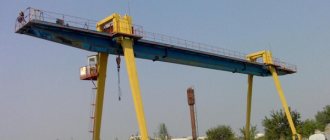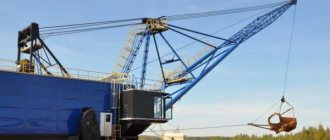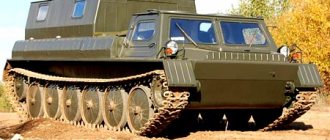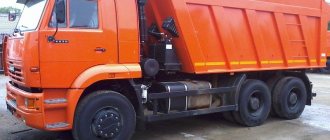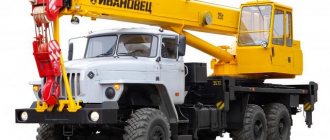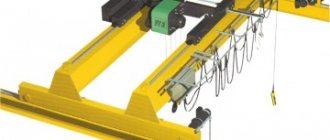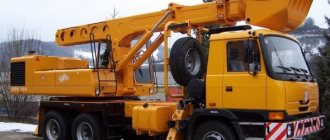Our company presents to your attention gantry cranes with a lifting capacity of 10 KKS.
Our specialists produce these structures only from reliable and proven materials. We understand that under heavy loads it is extremely important that all safety requirements are met to ensure high-quality and efficient operation. Over the course of many years of operation, our company has managed to win the trust of many clients, who later became our regular customers. You can also join them. We care about our customers and set the most optimal prices for the KKS 10 gantry crane, so you can easily buy the structure without much loss. At the same time, you will acquire a reliable assistant not only in construction, but also where you need to work with large loads.
Gantry cranes KKS10 are designed to work not only outdoors, but also inside industrial premises. This is determined depending on the specifics of your activity and the tasks that you set for gantry bridges.
To produce the KKS gantry crane, our specialists use only proven materials that will make the structure reliable and durable. Nowadays it is quite difficult to find high quality, so our company tries to produce only the highest quality and safest. Moreover, when working with large loads, it is important that all safety conditions are observed.
Before you buy a KKS 10 gantry crane, think in advance what tasks you need to perform using this design.
Our offices are located in:
- Moscow;
- Yekaterinburg;
- Kemerovo;
- Krasnoyarsk;
- Novosibirsk;
- Rostov-on-Don;
- St. Petersburg.
Gantry crane KKS 10 is a lifting mechanism for open warehouses, loading areas and storage hangars. This type of crane equipment has many advantages as well as outstanding performance.
Gantry crane KKS-10 - design and characteristics
The KKS-10 gantry crane has been used for a long time in many industries, successfully providing high quality work and demonstrating reliable design. The features of this model are determined by its structure and technical characteristics given below. Due to some technical difficulties, the model has its drawbacks, which do not prevent the use of a gantry crane.
External view of the KKS-10 gantry crane
Construction of the KKS-10 gantry crane
The KKS-10 gantry crane has a design made in the form of a lattice fabric made of metal bases. It is installed on stationary supports of a fixed height, but can have different lengths up to 32 m inclusive, which can vary during the manufacture of the structure. The total area of the covered working space can reach 400 m2.
The crane is controlled directly from the cabin, which is made on the basis of a rigid metal frame with large windows necessary for viewing the space.
The KKS-10 gantry crane is powered by a high-voltage electrical network with a voltage of 380V and converts electrical energy into mechanical energy through the use of a hydraulic drive. The design uses a 3-phase MTF asynchronous motor with a long service life.
The crane bridge is equipped with a trolley mounted on a monorail located along the entire length of the bridge. On top of the bridge there is a space adapted for the movement of personnel in order to control operations and carry out preventive maintenance. The rise to the top is carried out by means of an inclined ladder, securely fixed to a lattice structure.
A crane mounted on a movable cable is used as a working body. Its load capacity is limited to 800 kg. This is enough to carry out most operations, the accuracy of which is very high. At the same time, high operating speed and maneuverability are maintained.
The design of the device is adapted for outdoor use and can easily withstand humidity, wind loads and seasonal temperature fluctuations.
Gantry crane ladder KKS-10
Scope of application of the KKS-10 crane
The KKS-10 gantry crane, like all representatives of gantry cranes, has found its application in many industries. It is used in warehouses located in open areas, ports and other cargo enterprises, at railway stations and in large-scale construction.
Technical characteristics of the KKS-10 crane
- Operating temperature range °C from -40 to +40;
- Control - electrical, input voltage, V 380;
- Total weight of the structure t 42;
- Height m 15;
- Span length m from 14 to 32;
- Reach of the right console m 7.5;
- Left console reach m 8.5;
- Transport of goods with a length of no more than 8 m;
- Load capacity (including trolley) t 10;
- Load lifting height m 10;
- Lifting speed m/min 15;
- Movement of a filled cart m/min 36;
- Maximum travel speed of the crane m/min 40;
Video about the KKS-10 gantry crane
tpscom.ru
Area of use
The KKS-10 gantry crane is indispensable in cases where the use of other loading equipment is not possible. The design does not take up much space, while covering large areas. KKS-10 is indispensable in areas where it is necessary to work with large-sized cargo. It will be used:
- at railway enterprises;
- at the cargo port;
- in logging;
- in the construction of large-sized complexes;
- on construction sites;
- at factories of reinforced concrete products;
- in open warehouses;
- over large areas;
- in industrial workshops as a loading device;
- for working with hydraulic systems.
KKS is a specialized lifting mechanism for working in open and closed areas; it is used in hangars. Gantry cranes are often used in conveyor production. Designs of this type are characterized by mobility. This unpretentious equipment is highly productive and has a long service life of up to 20 years or more.
scope, design features, scope of application
The KKS-10 gantry crane is a special special equipment, which is a bridge-type lifting unit on supports, moving on wheels and having a fully electric control. This is a two-cantilever, self-assembling equipment with a specific span length, which is placed directly in open areas or in production premises for lifting loads.
Gantry crane KKS-10
Many special equipment factories are engaged in the production of gantry (or overhead) cranes, the largest of which in the Russian Federation are located in Moscow, Rostov-on-Don, St. Petersburg, Yekaterinburg, Novosibirsk, etc.
Photo of the KKS-10 gantry crane
Application area
A gantry crane is a unique machine and irreplaceable in cases where the approach of other lifting equipment is difficult or impossible.
Occupying a comparative minimum of space on the ground, it can cover large areas with perfect loading and unloading accuracy.
KKS-10 gantry cranes are used both in construction and in all other places where it is necessary to work with large loads:
- At railway stations.
- At the cargo port.
- In open warehouses.
- In the construction of vast complexes.
- At loading areas of industrial zones.
- In the construction of large engineering structures.
- For servicing hydraulic systems.
Model features
KKS-10 in different configurations may have the following distinctive features:
- For ease of use for different purposes, KKS-10 gantry cranes can be manufactured with different span lengths - standard or individual by agreement with the customer.
- Vertical supports can be equipped with additional racks that have a constant panel spacing.
- The operator's cabin can be either permanently fixed or with the ability to move along the length of the bridge.
Overall dimensions of the KKS-10 crane
In addition, the crane can be equipped with various working equipment:
- Kryukov for the standard method of picking up loads with a KKS-10 zk crane.
- Grab for transportation within the work site and loading of bulk cargo.
- Electromagnetic for working with metal loads, in particular scrap metal.
IMPORTANT! The gantry crane is adapted to work in mid-latitude climates and can easily withstand both frost and high temperatures.
Device
The KKS-10 gantry crane has the following features and capabilities:
- The entire structure of the crane - the supports and the bridge itself - has a lattice structure, which significantly reduces its weight while maintaining strength and load capacity, and also provides a better overview of the work being performed.
- The crane is equipped with a suspended cargo monorail trolley. A deck with fencing is installed above the monorail to allow walking along the entire length of the bridge.
- The entrance to the crane and to the cabin is equipped with a flexible support in the form of a ladder.
- To prevent loosening of the moving mechanisms of the cargo trolley and cabin, special rollers are installed, mounted on the main frame with support on the lower chord of the bridge.
- The power cable is suspended and securely fastened to the brackets.
- For modern models, several control methods are used: both from the cabin and from the ground by wire, as well as using a remote control transmitting a radio signal.
- Repair platforms are provided on the console.
- The safety of the operation of all systems and mechanisms is ensured by the presence of control devices and devices: equipment extreme position limiters, tilt sensors, buffer devices, wind pressure alarm, and sound alarm.
INTERESTING! The KKS-10 crane, as standard, can be equipped with anti-theft gripping devices that comply with the SEV-725-77 standard.
Specifications
The list of technical characteristics of the KKS-10 gantry crane is reflected in the following table:
| Options | Unit measurements | Magnitude |
| Operating temperature range | OS | from -40 to +40 |
| Control - electrical, input voltage | IN | 380 |
| Total weight of the structure | T | 42 |
| Height | m | 15 |
| Span size | m | from 14 to 32 |
| Right console crash | m | 7,5 |
| Left console crash | m | 8,5 |
| Transport of cargo length, no more | m | 8 |
| Load capacity (including trolley) | T | 10 |
| Lifting height | m | 10 |
| Lifting speed | m/min | 15 |
| Moving a filled cart | m/min | 36 |
| Maximum crane travel speed | m/min | 40 |
ATTENTION! The use and storage of the KKS-10 crane is prohibited in areas where flammable or explosive substances are stored.
magistraltrade.ru
KKS classification
Special-purpose jib cranes with a lifting capacity of 10 tons are divided into 2 main types. The first type is marked KK and is intended for loading and unloading operations in open warehouses. The second type is labeled KKS and is characterized by special purposes; it is created according to individual projects and has a narrow specificity.
Crane at work
The functions of the KKS include:
- loading operations;
- transportation work;
- unloading functions.
KKS operate mainly with long piece and packaged cargo. This type is characterized by the use of a cargo cart placed on a monorail.
Operating conditions and main areas of application
KKS 10 gantry cranes can be used in the most unfavorable environmental conditions. They easily tolerate strong temperature changes and high humidity.
KKS 10 gantry cranes are often used in production facilities with conveyor technology, railway junctions, ports, etc. The weight of the equipment can reach several tens of tons, but this fact in no way affects the productivity of the crane.
The KKS 10 gantry crane is very unpretentious, but it is still worth remembering some important points that will ensure the normal operation of the equipment, in particular:
- Operating temperature range;
- absence of flammable and explosive substances under the beam.
Main operating parameters
It should be noted that this technology can be used in unfavorable environmental conditions, with strong temperature changes and high humidity.
The maximum operating weight is usually sufficient to handle large volumes of construction material. That is why KKS-10 is often used on railways, ports and other similar places.
And also where there are a large number of various containers, unloading and loading them manually takes an extremely long time.
The span length is sufficient to carry out all kinds of activities even in a warehouse with a very large area.
In most cases, it is enough for successful work on an area whose size is 400 m2.
The load can be lifted to a height that allows it to be placed in railway cars without any difficulty, as well as high loading platforms with non-opening sides.
So cars with trailers simply drive up under the boom of the gantry crane in question, after which the required amount of cargo is placed in them.
The reach of the console on both sides is quite large, which makes it possible to carry out various types of work not only strictly in the center of the span, but also in other places.
This is very convenient, since often the location of various items and containers on the territory of the warehouse does not allow the truck to maneuver through it.
In this review you will read the operating features of the latest modifications of KamAZ-53215.
The speed of work is quite high, even if it is carried out with the maximum possible weights.
That is why the KKS-10 is often used in various types of production where a conveyor is used - with the help of this equipment you can very quickly carry out all kinds of work. For example, loading bulk materials into an extruder or loading cement into a special mixer.
The weight of the crane, which is several tens of tons, in no way affects the productivity of its work.
Construction device
The working mechanism of the KKS 10 gantry crane is:
- pair of gearboxes;
- running drive wheel;
- ring gear;
- drive shaft;
- gear;
- electric motor;
- bearing shell;
- intermediate shaft;
- brake mechanism;
- gear coupling;
- brake pulley
An equally important component of the working mechanism of the KKS 10 gantry crane is the brake.
The service life of KKS 10 gantry cranes is affected by the quality of installation; it should only be performed by the manufacturer’s specialists.
Electric motor properties
The heart of the entire KKS-10 mechanism is the MTF-211-6 electric motor. This is a typical motor that runs on electricity and produces an average shaft speed of 940 rpm.
The maximum power of the unit is 8 kW, and its gearbox efficiency is about 78 percent. It drives all the mechanisms inside the special equipment: the trolley drive shaft, the lift, the drive gear, locking mechanisms and the crane probe.
The main advantage of this model is reliability and unpretentiousness to operating conditions. The electric motor can be used in temperate, cold-temperate, tropical and continental climates. It is not recommended to install a crane with such an engine at an altitude of more than 1 km and in places with high electrification. In this case, the engine can be placed on the outer casing of the structure, due to first-class protection from dirt and water.
What is a beam crane
The device consists of the following parts:
- control system;
- end beams;
- load-bearing bridge;
- telpher (hoist).
Manufacturers offer consumers different types of mechanisms; for example, organizations may require a rotating crane beam. Each mechanism comes with an instruction manual. When making a choice, it is necessary to take into account the technical characteristics and operating principle of the equipment. One mobile system differs from another in the weight of the load it lifts and its design.
Weights are moved using a hoist, the movement of which is carried out along the rail tracks of the beam. The end beams are equipped with wheels. They are needed so that the device can move along crane tracks.
Beam cranes differ from overhead cranes in that they have a lightweight configuration. This is a single girder device, while the overhead crane can be double girder. Both systems use crane rails. The company can install 1 or more crane beams in the garage for medium loads and an overhead crane for moving large loads.
Businesses operating in different industries often require a overhead crane; They can find out model descriptions from the companies that produce the equipment. The devices are compact in size, so they are used to perform work in hard-to-reach places and narrow spans.
Safety
In strong winds, the crane installation is protected from being stolen along the tracks by special grips mounted in the racks of the drive trolleys. The elements operate in automatic mode; the force of the air flow is measured using signaling sensors at the top point of the tap.
The indicators read the wind pressure acting in the direction along the working paths. They are mounted in such a way that the measuring part faces along the main truss. Under the influence of air flow, the wing deflects, turning a lever rigidly mounted on the axis. The design aggregates onto a pattern with its rotation in one direction, depending on the direction of the wind. Next, a load is placed on the microswitches, which operate at critical values, turning off the running trolleys and activating the braking and anti-theft systems. The regulator also includes an alarm system; the device can be configured to trigger when the wind force is from 2.0 to 4.0 MPa.
Support crane beam
The mobile cargo movement system consists of the following elements:
- A load-bearing beam, also called a span.
- Telpher, which is understood as an electric hoist. The movement is carried out along the span beam.
- Remote Control.
- Assistive devices. It could be a load limiter. Enterprises use grippers that are used to lift loads.
The guides are attached to the supports. They are made in the form of rails or a square made of metal or concrete.
Most often, the control panel for the mechanism is located inside the cabin, but the enterprise can install a system controlled from the floor. For this purpose, a push-button station is installed.
When installing equipment, the connection diagram must be taken into account; the remote control is easy to operate.
The electrical support system is used to move loads. Manufacturers install a hoist or winch on the trolleys. The lifting mechanism drives the electric motor, gearbox and trolley wheels. When assembling the equipment, the electrical diagram must be taken into account.
When choosing equipment for an enterprise, you need to take into account its load capacity. The 5-ton support crane is most often used. Electrical equipment is used for general and metallurgical work. It can be clamshell or pin; Magnetic devices are also used. Before starting work, the circuit diagram must be taken into account.
Specifications
The KKS-10 gantry crane has technical characteristics high enough to replace several ground-based lifting devices powered by a battery or internal combustion engine. The peculiarities of the parameters are that almost every mechanism is manufactured according to the customer’s individual dimensions.
The general characteristics of the lifting device are as follows:
- height of the bridge crossbar - 15 m;
- span width - 14-32 m;
- console reach - 7.5-8.5 m;
- load capacity - 10000 kg;
- movement speed - 40 m/min;
- load lifting height - 10 m;
- lifting speed - 15 m/min;
- the maximum length of the processed object is 800 cm;
- total curb weight - 43,000 kg;
- engine power - 7.5 kW;
- temperature range ± 40ºС.
The KKS-20 gantry crane is distinguished by its greater weight (64 tons), lifting height (up to 30 m) and load capacity (up to 20,000 kg). The length of the crossbar can reach 60 m, and the size of the processed object is 12 m.
Lifting equipment and chassis can be controlled directly from the operator’s cabin or remote control at a safe distance from operating mechanisms.
The choice to install a cabin is made in cases where the crane is operated in open areas. To work under the roof, users prefer a product equipped with a remote control.
Overhead crane
The electric overhead crane moves along suspended supports. They are mounted in farms or overpasses. In the latter case, the cranes are used outdoors.
The device consists of the following elements:
- Bearing crossbar.
- Tal.
- A drive equipped with a remote control to control the installation.
- Movable end beam.
- End beam (rigid fastening).
- The span beam, which is an I-beam.
- Running carriages.
The 1t suspended crane is used in small enterprises and warehouses to move cargo whose weight does not exceed 1t.
Enterprises can use a two-span crane beam with a lifting capacity of 2 tons. Such models are most often used in closed workshops; They are used for loading, unloading and moving materials.
Suspended loads should be treated with caution, which is why manufacturing companies equip devices with limiters. The speed of cargo movement is strictly controlled, and tests are required to detect malfunctions.
Drive types
Manufacturers produce devices with different types of drive. Buyers can purchase the following overhead cranes:
- With manual drive. A mechanical chain drive is installed on the crane beams.
- With electric. Such cranes are driven by a gearbox.
Consumers need to choose beam cranes taking into account the needs of the enterprise in moving goods. Small and medium-sized organizations can opt for low-capacity cranes.
Electrical diagram
Enterprises often install mechanisms that are controlled from the floor. In this case, the electrical equipment is located on the end beam. If you look at the main trolleys, there is a shield on the opposite side of them. Magnetic starters for the electric motor of the mechanism are located here. Circuit breakers are located on panel 2. The limit switch is located on the end beam.
The supply of current to the electric hoist is carried out using a KRPT cable (a cable in a rubber sheath of a portable type is heavy). This is a flexible product with copper conductors.
When installing the cable, 1 end is fixed to the trolley end beam in a stationary position, and 2 is connected to the hoist. During installation, the crane control circuit must be taken into account.
The cable is suspended using rollers. Their movement occurs along a wire made of steel. The electrical equipment used to control the crane beam is fixed on the hoist. In order to be able to control magnetic starters, a push-button station is used. It is suspended from the lower side wall of the cabinet in which the electrical equipment is located. A steel cable is used to secure the equipment.
Advantages and disadvantages
The use of crane equipment involves 2 options for its installation:
- supporting;
- suspension.
Each option has its own disadvantages and advantages. Support systems are more reliable, so they are considered relatively safe. They have a long span. They demonstrate greater stability when moving heavy objects. They have a longer service life. The machines are more productive, so they can be used to move massive loads.
The disadvantages of hanging systems include their high cost. First of all, this applies to mechanisms that are designed to move heavy loads. Support cranes are not installed in corridors and narrow rooms. Electronic systems are quite demanding, so they require regular maintenance.
Specifications
KKS-10 belongs to the category of special-purpose lifting devices; it is capable of performing loading operations at any air temperature. The operating range ranges from – 40 to + 40 degrees. The design can withstand high humidity, any wind loads, and temperature changes.
The technical features of the crane are as follows:
- crane weight is 42 tons;
- height – from 6 to 9 m;
- span length ranges from 9 to 32 m;
- weight capacity from 3 – 10 tons;
- load movement speed – 15 m/min;
- the loaded trolley moves at a speed of 36 m/min;
- crane speed – up to 40 m/min;
- operating time – 3,000 cycles.
The crane span has a length of 20 to 32 meters, depending on the purpose of the structure. The right console is characterized by a reach of 7.5 meters, the left – 8.5 meters. It is strictly prohibited to work on flammable and explosive substances. The service life of the structure is more than 20 years.
